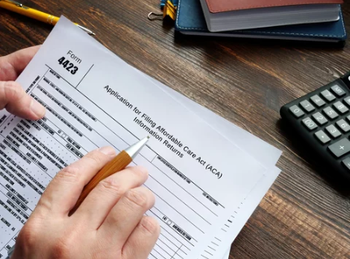
Data Shortfalls Hamper Medicaid's Oversight Ability, GAO Finds
CMS has touted an upgraded reporting system to spot overpayments, but only 18 states have implemented it so far.
Giving states increased latitude over how they operate Medicaid gives them the ability to tailor programs to local needs, but this also makes it harder for CMS to spot problems that can lead to improper payments, according to a
Lack of uniform data—something CMS has acknowledged—is a major barrier to good oversight, one that the report found must be addressed sooner rather than later. In particular, CMS has pinned its oversight hopes on the Transformed Medicaid Statistical Information System (T-MSIS). As of October, only 18 states were taking part; however, these accounted for 70% of the Medicaid population, according to the report.
The report released Monday comes as Congress wants to rethink Medicaid expansion under the Affordable Care Act (ACA), a law that has vastly expanded the Medicaid population and, at the same time, given states increased flexibility through waiver programs to customize Medicaid to state needs. Congress will likely weigh whether Medicaid should be run as a
GAO found that in 2015, Medicaid accounted for $347.5 billion in federal spending and $206.8 billion in state matching funds. GAO estimated that improper spending reached $36.3 billion in Medcaid in 2016, up from $14.4 billion in 2013, the year before expansion took full effect. That’s not to say that CMS is not
Still, the GAO found:
- Current expenditure data do not accurately describe how states finance their Medicaid share, making it harder for CMS to evaluate appropriateness.
- Available utilization data are incomplete and may be reported up to 3 years late. This is especially true in managed care, which accounts for an ever-increasing share of the program.
GAO sees value in the T-MSIS improvements—it just wants to see them implemented at a quicker pace. Under T-MSIS, states make the following reporting changes:
- Data are reported monthly, not quarterly.
- The number of data variables rises from 200 to 550.
- The system implements 3500 quality checks to catch bad data.
This was the second GAO report
“States, which are responsible for the day-to-day administration of the Medicaid program, are the first line of defense against improper payments,” the report said.
When it comes to double coverage, the investigators wrote, “CMS has conducted checks to identify individuals with duplicate coverage, and plans to complete these checks at least 2 times per coverage year, which has the potential to save federal—as well as beneficiary—dollars. However, CMS has not developed a plan for assessing whether the checks and other procedures—such as thresholds for the level of duplicate coverage deemed acceptable—are sufficient to prevent and detect duplicate coverage.”
Newsletter
Stay ahead of policy, cost, and value—subscribe to AJMC for expert insights at the intersection of clinical care and health economics.








































